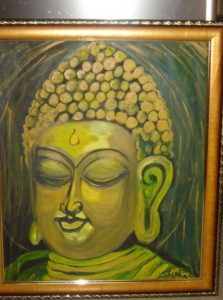Data Journalism: The Art and Science of Data Storytelling
Shikha SaxenaOct 5, 2020·4 min read
Few Years back, while listening to, one of the technical communication conference speaker, about career transition from, hard core journalism to technical writing, got me interested in art of Data storytelling. It sounds fun telling stories around datasets, as images, texts, news texts, infographics and such other resources, to bring out meaningful information in front of audiences. Data journalism is the art and science of data storytelling, by examining the pattern and statistics of data, for writing and reporting news story. Data journalists research data and create an enriching news story , by joining the dots and providing deeper insights from relevant data. While journalism is the voice of voiceless a media arts tool to join authorities to society; Data Journalism is point of intersection of art and science! Where acquired knowledge through datasets, is applied to create, report and write the meaningful information, for greater reach.
What is Data Journalism?
Data Journalism is an art of telling compelling story through the use of text data, documents, graphics, images and bringing forth the point in a theme. This involves data collection and visualization and showing the importance of this information to a wider audience. For example photography or collage display for Child Education or Global Warming or Saving Ocean Life and so on.
Images here are used as a tool to tell the story, about a theme and bringing forth, the pressing need for, child education and saving mother Earth from Global Warming or saving Marine Life or reducing water pollution.
Data Journalism open new possibilities of creating news stories from vast amount of data and digital information available.
As in journalism the ABC of of Data Journalism are Accuracy, Brevity, Clarity!
Types of Data Journalism
There are five types of data journalism available to interpret data for different purpose and audiences. These include:
Investigative Journalism: This type of journalism involves reporters to investigate a single topic and collect data around it to created relevant story. Topics could be either serious crimes, political or corporate themes. Process involves researching and analyzing data and put the facts in front of public.
Broadcast or News Journalism: This types of journalism is for commercial usage. This involves the data collection and analysis around the world about people, country, breaking news, headlines of latest happening in the world, that capture world attention, on rapidly changing media landscape.
Opinions or Reviews Journalism: Content of such journalism include evaluation and reviews about books, movies, eating joints, people, politics, innovations, entrepreneurships, public services in the form of digital storytelling. This type of journalism has the power of reputation building and criticism as well.
Sports , Trade or Entertainment Columns Journalism: This journalism make use of data points about a particular Sport, Trade or Entertainment service or personality and create a compelling digital story to enhance the audience reach.
Online Feature Writing Journalism: Online journalism is most quick and efficient kind, making readers to receive information online, in fraction of seconds after it actually takes place. Instant information, for instant information savvy, audiences. Online resources are able to provide synopsis of events, as they occur as breaking news and keep readers up-to -date.
How to become Data Journalists?
No degree in Statistics or Journalism? No Problem!
Are you a data loving person, with a knack, to interpret data in a interesting and enriching way, to audiences? If some topics interests you to a point that you can collect data , analyze it and put in front of audience? You are on your way to become data journalist.
Data journalists are investigative reporters, who distill information after collecting and unpacking data and package it in the form of news story, with useful information.
Put forward your findings and results by using multiple mediums, as online blogs, feature writing in magazines or through vlogs on YouTube or on Social media. There are numerous possibilities.
Make sure your research is relevant and Data is true and correct. Data is the foundation of the story it should have value. Set stage by selecting a topic and story idea. Collect, cleanse and analyze data and present it carefully. Create a simple digital story with a proper flow.
Gathering data, filtering(cleansing data) and visualizing data and to reveal and serve important hidden information, to audience has growing value!
Dig deep in data, brainstorm, compare and connect the dots, is all you need. Working with data in an untapped territory and bringing out important information is promising for journalists. First look at the data (visualization) is quite puzzling and overwhelming for the mind.
It takes passion and practice, to convert raw boring data, into useful and interesting stories for the world to read, through Data Journalism!
As Published in Medium:

Share Your Thoughts